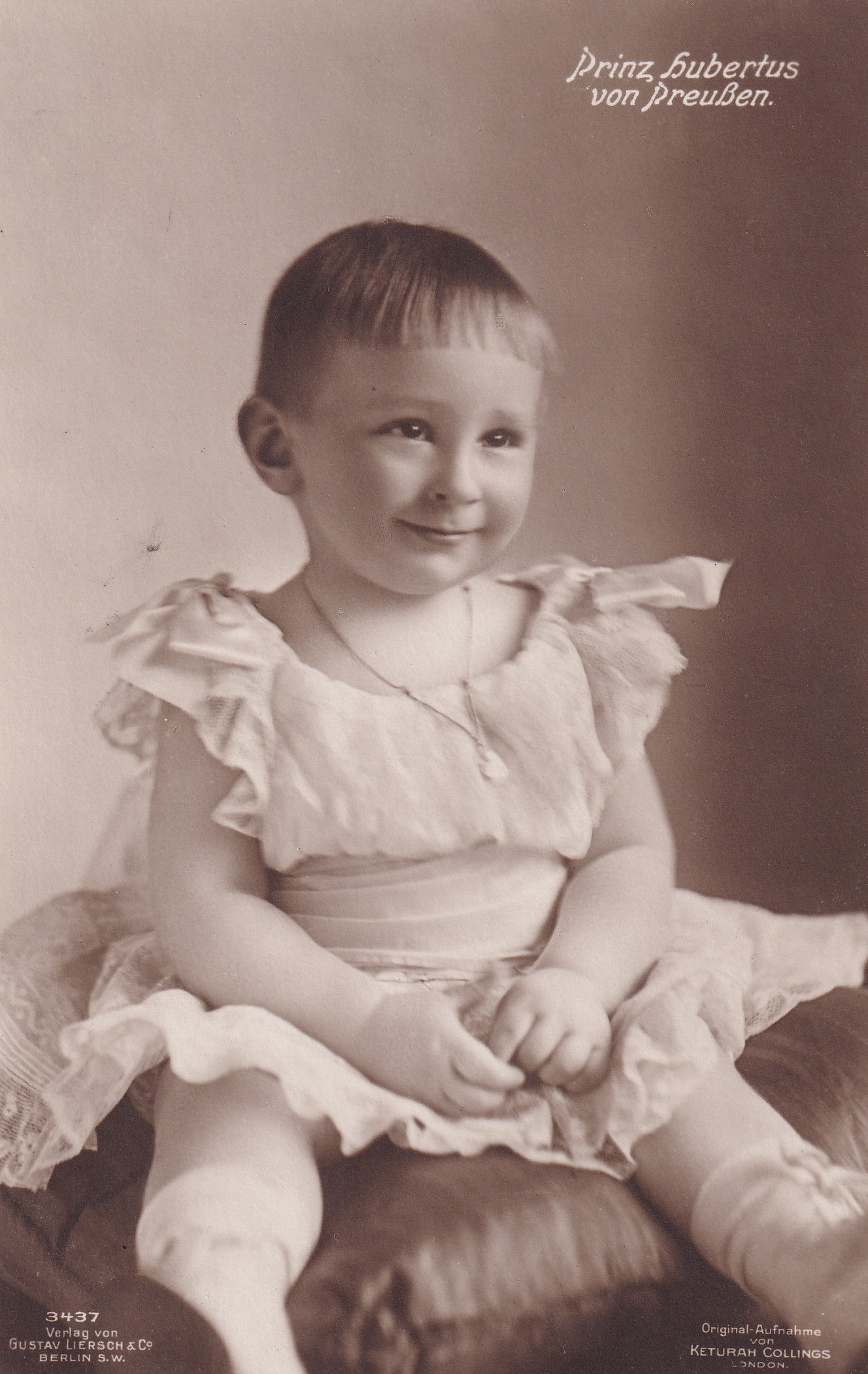Bildpostkarte mit einer Fotografie des Prinzen Hubertus von Preußen (1909-1950), dritter Sohn des letzten deutschen Kronprinzen Wilhelm (1882-1951) und seiner Gemahlin Cecilie (1886-1954), 1911. Der Prinz in einem spitzenbesetzten Kleidchen und Schuhen auf einem dunklen Seidenkissen sitzend und nach lächelnd nach rechts blicken. Bez. o. r. "Prinz Hubertus von Preußen.", u.l. "3437 Verlag von Gustav Liersch & Co. Berlin S.W.", r. "Original-Aufnahme von Keturah Collings London". Verso ungelaufen, im Briefmarkenfeld gedruckt "P.R.A." in Lorbeerkranz, handschriftl. Vorname und Geburtsdatum des Dargestellten sowie "1911".
en

